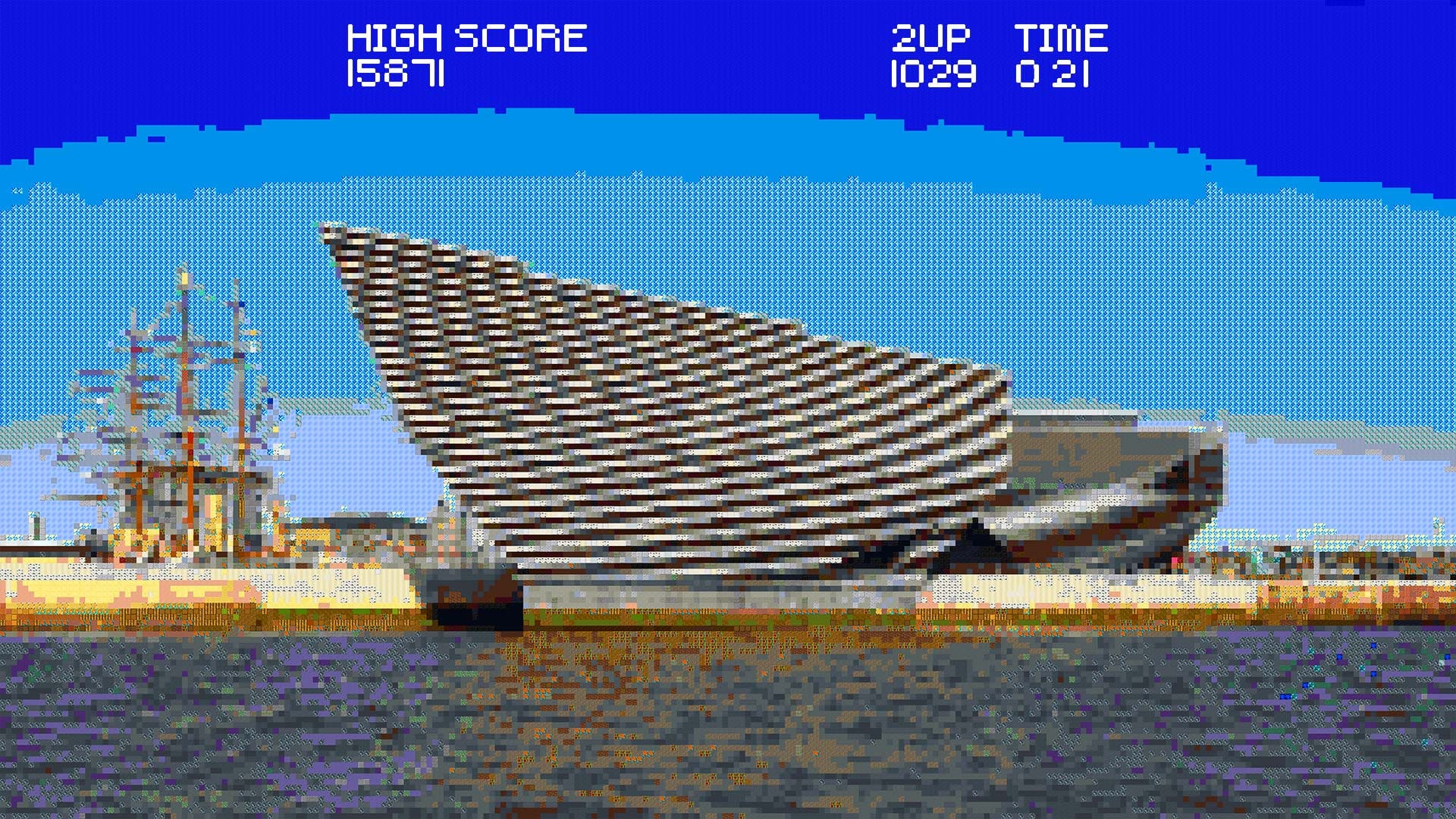On our recent trip to Dundee for the annual DJCAD Degree Show, we popped into the V&A to check out their permanent collection as well as the current Videogames: Design/Play/Disrupt exhibition on all summer. We’ve been excited about the V&A for a while now, so it was great to explore the collections (and the building itself!) as a team.
The building is an architectural masterpiece, seamlessly combining Dundee’s seafaring past with its design-forward future. Walking toward the museum feels like boarding a ship, and the interior begs to be explored, from the shop and café on the ground floor to the exhibitions and glassed-in restaurant on the upper levels.
While the permanent collection is smaller than the V&A down south, it’s fascinating to see so many incredible examples of Scottish design in one building. There’s bound to be something for everyone in the overstuffed Scottish design rooms, from a copy of the early 90s videogame Lemmings to Charles Rennie Mackintosh furniture and blueprints of the Falkirk Wheel. I was particularly excited to see so many cool examples of beautiful textiles and clothing from the last 150 years, interspersed with jewellery, silver and of course beautiful artist renderings of buildings from across Scotland.
As a non-videogame player, I was prepared to be bored to tears throughout the videogame exhibit, but I was pleasantly surprised to find that it included interesting behind-the-scenes paraphernalia, sketchbooks, storyboards and other cool objects not usually associated with the creation of videogames. Personally, I was captivated by the second portion of the exhibit, a dim room filled with quotes and news stories about the ethics of videogames. Questions were raised to make you think: “what IS a videogame?” and “are videogames art?” among them. But in addition to problematising the entire notion of what comprises a videogame, the bias inherent in the industry was also confronted head-on. From racism to sexism, misogyny and homophobia, the videogame industry is not free of biases (or controversies), and it was refreshing to see people who clearly love videogames discussing the industry in an honest way. The exhibit overall was richer for it, and would have felt flat and tone-deaf had it tried to ignore these looming questions over the state of videogames today.
The exhibit finishes with a room full of indie games that are all available to play, and all unique in the way they approach the definition of a videogame. Some of the games question what a videogame itself is: Line Wobbler was a big hit during our visit, an incredibly addictive game that is ‘just’ a series of lights on a vertical wire. Other games examine topics not usually found in videogames, like Breakup Squad, a multiplayer game where a group of friends try to keep two exes from reuniting at a party. Still others poke fun at the usual nature of videogames, like QWOP, where the notion of sporty, talented athletes in videogames is subverted in a fun and unique way. Last and most importantly, the exhibit is inclusive, featuring games like Queers In Love At The End Of The World, which asks players to decide how they would spend their last 10 seconds on earth, but through a perspective not usually seen in mainstream videogames. The exhibition holds something for everyone thanks to the wide range of games, no matter what your skill level. A nice bonus for the design-savvy? The videogame cabinets are designed by up-and-coming artists and look sleek and modern, making the space feel like the arcades of the 1980s and 90s… minus the sticky floors!
Once we pulled ourselves away from the arcade-style finale, we couldn’t stop chatting about how great the exhibition was. Don’t miss Videogames: Design/Play/Disrupt, but more importantly, don’t miss out on the museum in its entirety. It’s worth the trip!



